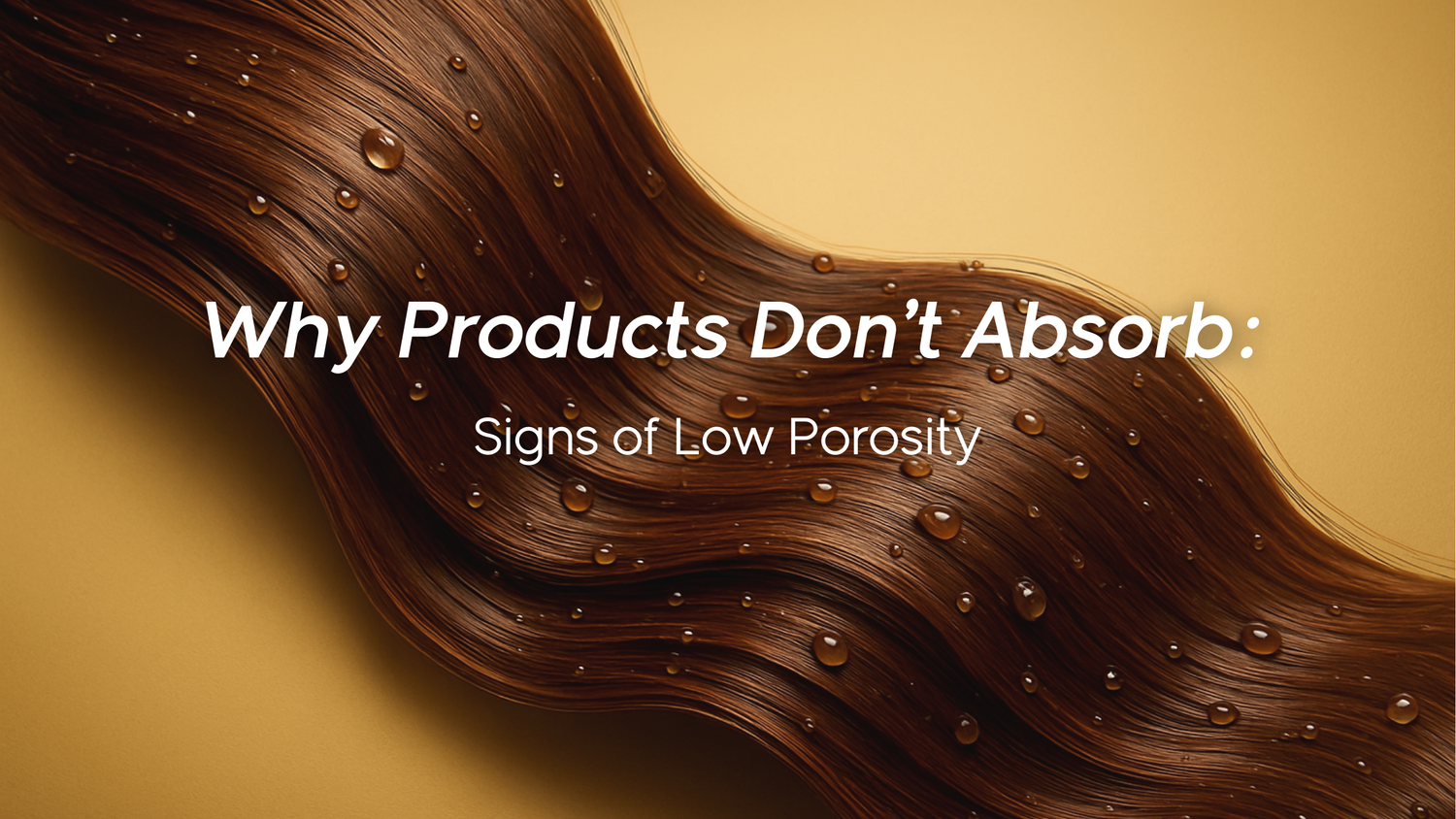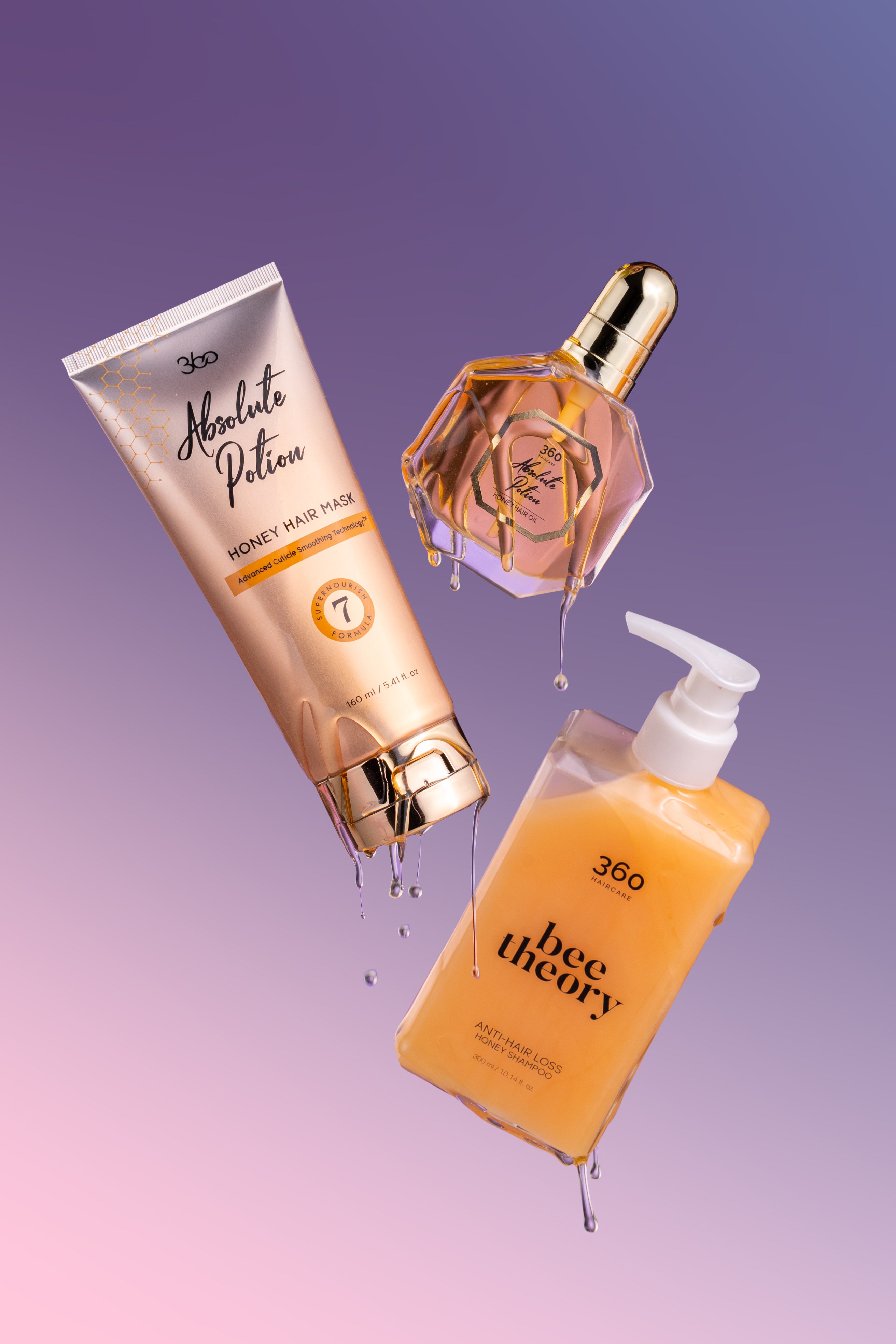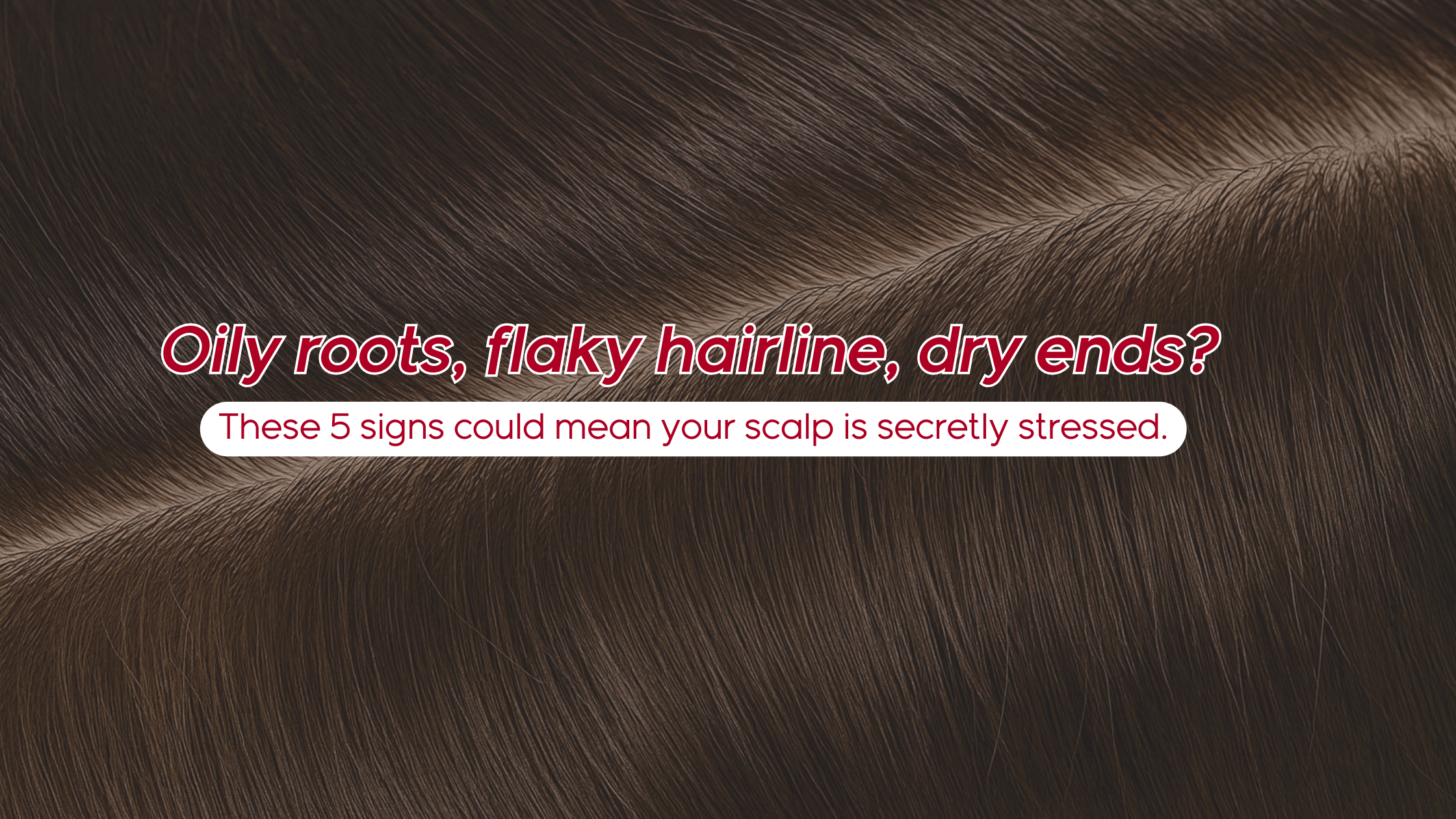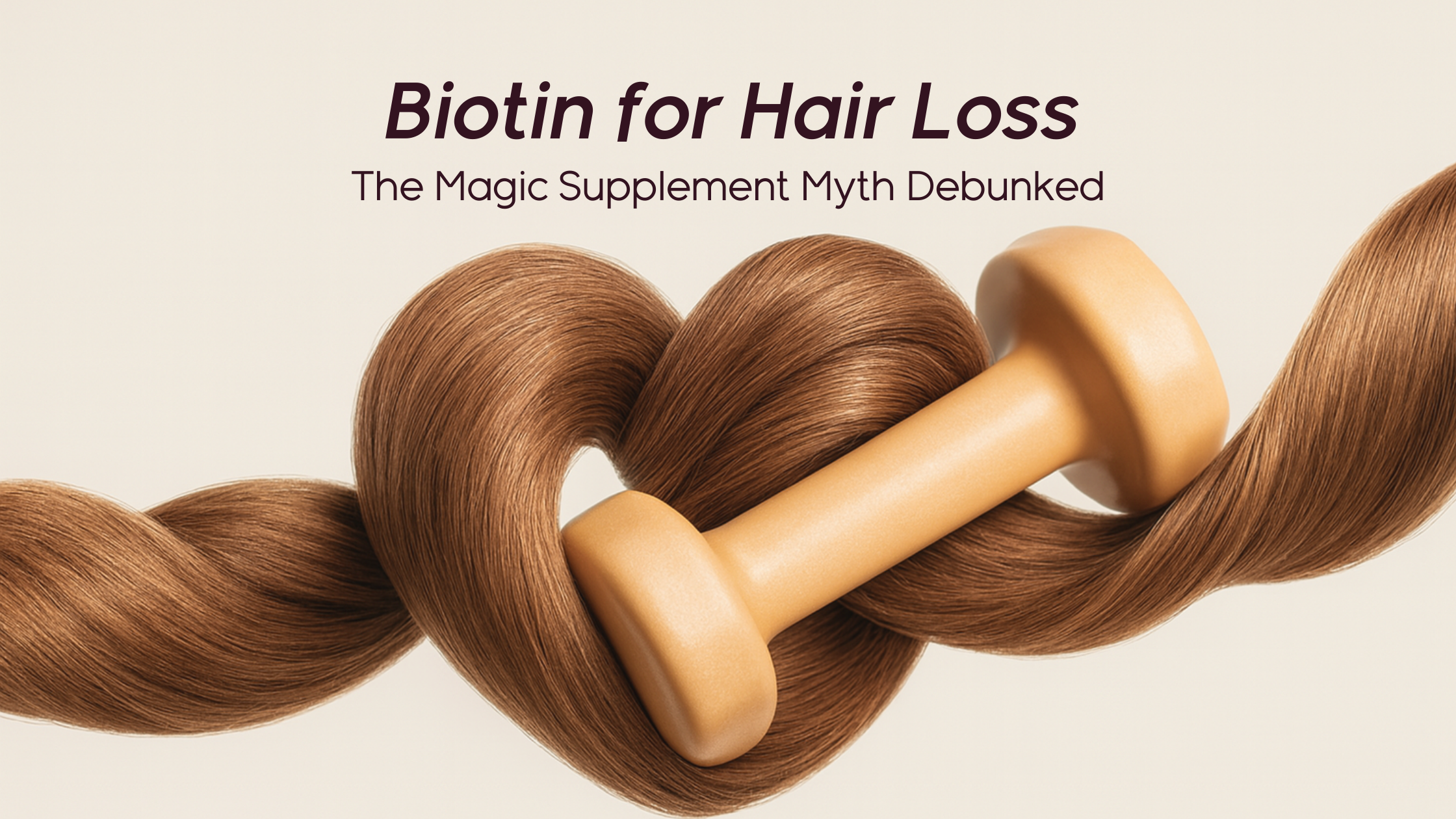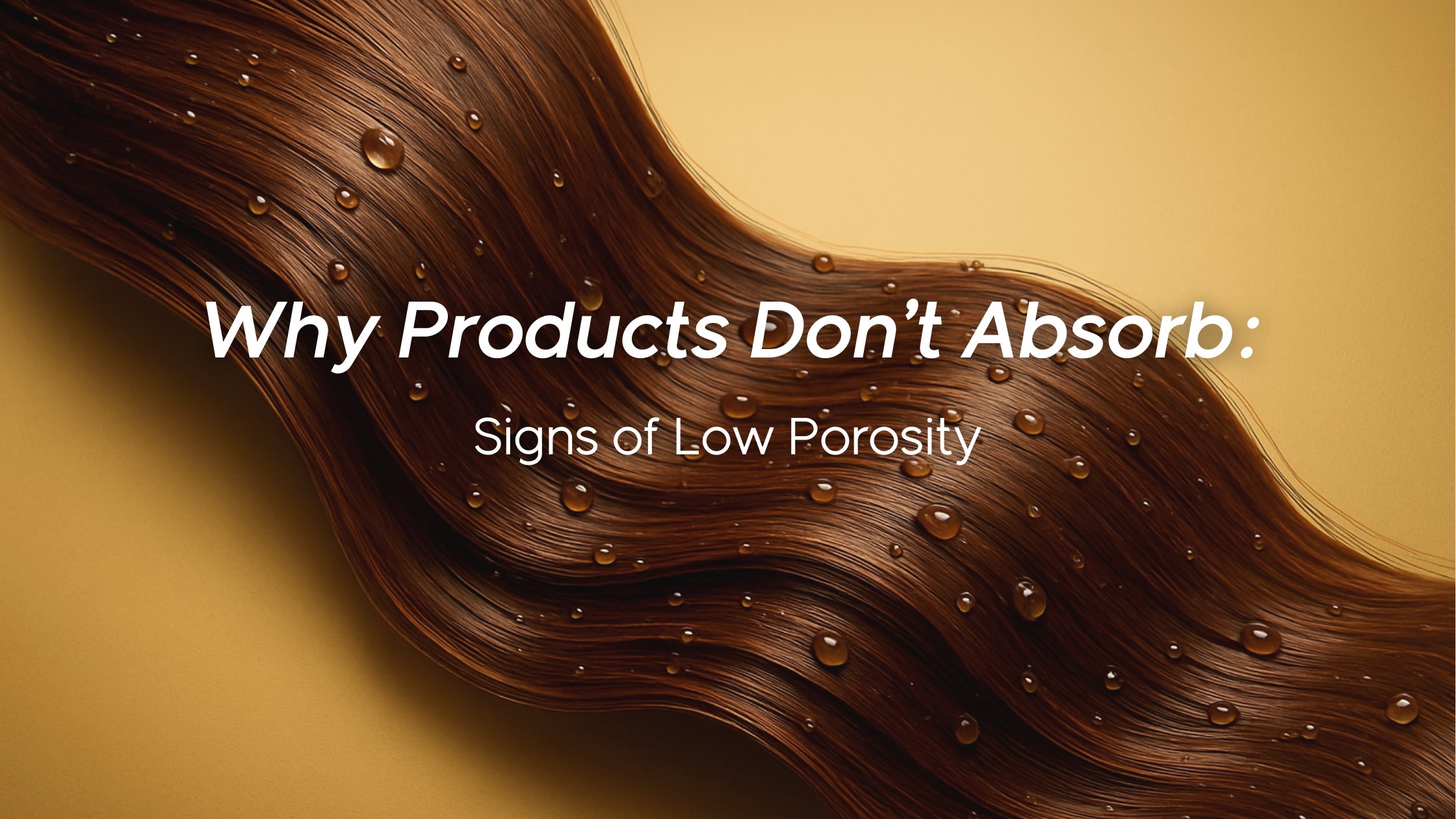Have you ever applied a hair mask only to find your hair still feels dry, frizzy, and just the same? If this sounds familiar, you might have low porosity hair.
But here’s the twist: most people either misread the signs or chase the wrong solutions.
Instead of blaming the products, it could simply be your hair. Low porosity hair has a tightly sealed cuticle layer. Think of it like a raincoat fabric, very smooth (almost plasticky) with no gaps, so water beads up and rolls off. In the same way, water, products, and nutrients struggle to get into your hair. That’s why even high-quality products can feel like they “don’t work.”
The bigger problem? Many assume that all products are the same and settle for whatever’s cheapest, which only makes matters worse.
Let’s break the cycle by clearing up the 5 most common signs of low porosity hair that are often misunderstood and what they really mean.
1. Water Beads Instead of Absorbs
If you notice droplets sitting on your strands after a shower, that’s not necessarily a sign of strong, “healthy” hair. In reality, it’s one of the most obvious indicators of low porosity. The sealed cuticle keeps water out, forcing it to sit on the surface before rolling away.
2. Products Sit on Top of Your Hair
Ever felt like oils, conditioners, or even hair masks just sit there without sinking in? People often blame the formula, but this resistance is a classic low porosity trait. Quality products are designed to absorb. If they don’t, it’s usually because your cuticles are acting like a barrier.
3. Long Drying Time After Wash
Does your hair stay damp for ages after a wash, even with a dryer? That’s because if water struggles to enter your strands, it also struggles to leave. The result? Longer drying times, more heat exposure if you’re blow-drying, and a higher chance of damage over time.
4. Natural Shine That Misleads
Low porosity hair often looks shiny at first glance because of its smooth cuticle surface reflecting light. But don’t be fooled! Shine doesn’t always mean hydrated. Straight low porosity hair can appear silky, while wavy or frizz-prone low porosity hair might look puffy or dull despite having that same smooth cuticle structure.
5. Resistant to Color or Treatments
Ever noticed patchy results after coloring, or needed way more processing time for chemical treatments than expected? That’s low porosity at play. The sealed cuticle makes it harder for color molecules and treatments to penetrate, meaning less effective results without extra time or effort.
Expert Thoughts
If you’re recognizing these signs, there’s a good chance your hair is low porosity. And while it can feel frustrating, here’s the silver lining. Once you understand how your cuticles work, you can adjust your routine and finally see results.
Understand that it’s not always about switching to new products. It’s about using them the right way.
Remember:
- Rinse with warm water before applying products to gently lift the cuticle
- Choose lightweight products to avoid build up
- Use heat or steam (like a warm towel) to help masks penetrate.
- Let's not always assume shine = hydration.
- Clarify gently from time to time to reset your strands.
Or, try solutions designed with low porosity hair in mind:
- Bee Theory Anti-Hair Loss Honey Shampoo – Gentle cleanse, prevents buildup
- Absolute Potion Honey Hair Mask – Deep hydration, especially with steam
- Absolute Potion Honey Hair Oil – Lightweight finish that seals in moisture
🎥 Want to see what low porosity hair looks like in real life? Check out our TikTok where we break down low porosity hair tests and routines in quick, visual clips:
With heart and hair,
Nina
Apprentice Trichologist & Founder of 360 Haircare


